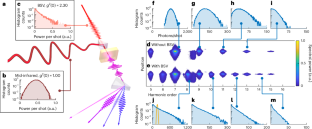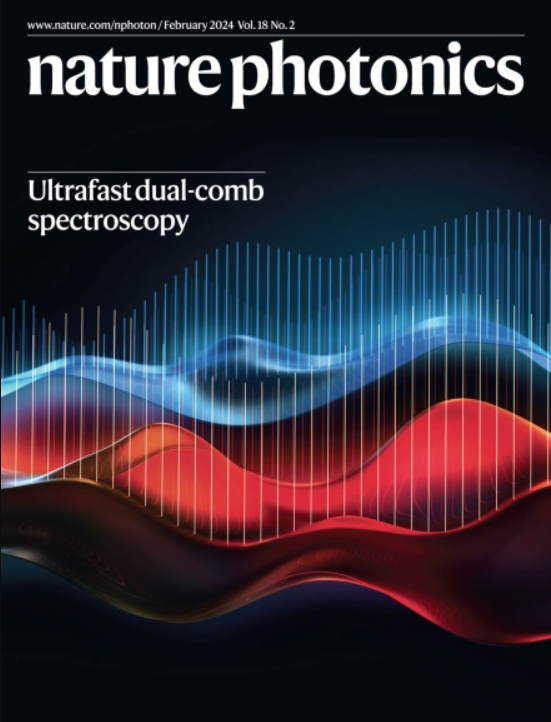Photon bunching in high-harmonic emission controlled by quantum light
IF 32.9
1区 物理与天体物理
Q1 OPTICS
引用次数: 0
Abstract
Attosecond spectroscopy comprises several techniques to probe matter using electrons and photons. One frontier of attosecond methods is to reveal complex phenomena arising from quantum-mechanical correlations in the matter system, in the photon fields and among them. Recent theories have laid the groundwork for understanding how quantum-optical properties affect high-field photonics, such as strong-field ionization and acceleration of electrons in quantum-optical fields, and how entanglement between the field modes arises during the interaction. Here we demonstrate a new experimental approach that transduces some properties of a quantum-optical state through a strong-field nonlinearity. We perturb high-harmonic emission from a semiconductor with a bright squeezed vacuum field, resulting in the emission of sidebands of the high harmonics with super-Poissonian statistics, indicating that the emitted photons are bunched. Our results suggest that perturbing strong-field dynamics with quantum-optical states is a viable way to coherently control the generation of these states at short wavelengths, such as extreme ultraviolet or soft X-rays. Quantum correlations will be instrumental to advance attosecond spectroscopy and imaging beyond the classical limits. When high-harmonic emission from a ZnO crystal is perturbed with a bright squeezed vacuum beam, a comb of super-bunched high-order sidebands is created. This indicates photon bunching and the generation of a non-coherent state at the short wavelength.


量子光控制高次谐波发射中的光子聚束
阿秒光谱学包括几种利用电子和光子探测物质的技术。阿秒方法的一个前沿是揭示物质系统、光子场以及它们之间的量子力学关联所引起的复杂现象。最近的理论为理解量子光学性质如何影响高场光子学奠定了基础,例如量子光场中电子的强场电离和加速,以及在相互作用过程中场模式之间如何产生纠缠。在这里,我们展示了一种新的实验方法,通过强场非线性来改变量子光学态的一些特性。我们用明亮的压缩真空场扰动半导体的高次谐波发射,产生具有超泊松统计的高次谐波边带发射,表明发射的光子是束状的。我们的研究结果表明,用量子光态扰动强场动力学是一种可行的方法,可以在短波长(如极紫外或软x射线)下相干地控制这些态的产生。量子相关将有助于推进阿秒光谱和成像超越经典极限。
本文章由计算机程序翻译,如有差异,请以英文原文为准。
求助全文
约1分钟内获得全文
求助全文
来源期刊

Nature Photonics
物理-光学
CiteScore
54.20
自引率
1.70%
发文量
158
审稿时长
12 months
期刊介绍:
Nature Photonics is a monthly journal dedicated to the scientific study and application of light, known as Photonics. It publishes top-quality, peer-reviewed research across all areas of light generation, manipulation, and detection.
The journal encompasses research into the fundamental properties of light and its interactions with matter, as well as the latest developments in optoelectronic devices and emerging photonics applications. Topics covered include lasers, LEDs, imaging, detectors, optoelectronic devices, quantum optics, biophotonics, optical data storage, spectroscopy, fiber optics, solar energy, displays, terahertz technology, nonlinear optics, plasmonics, nanophotonics, and X-rays.
In addition to research papers and review articles summarizing scientific findings in optoelectronics, Nature Photonics also features News and Views pieces and research highlights. It uniquely includes articles on the business aspects of the industry, such as technology commercialization and market analysis, offering a comprehensive perspective on the field.
 求助内容:
求助内容: 应助结果提醒方式:
应助结果提醒方式:


